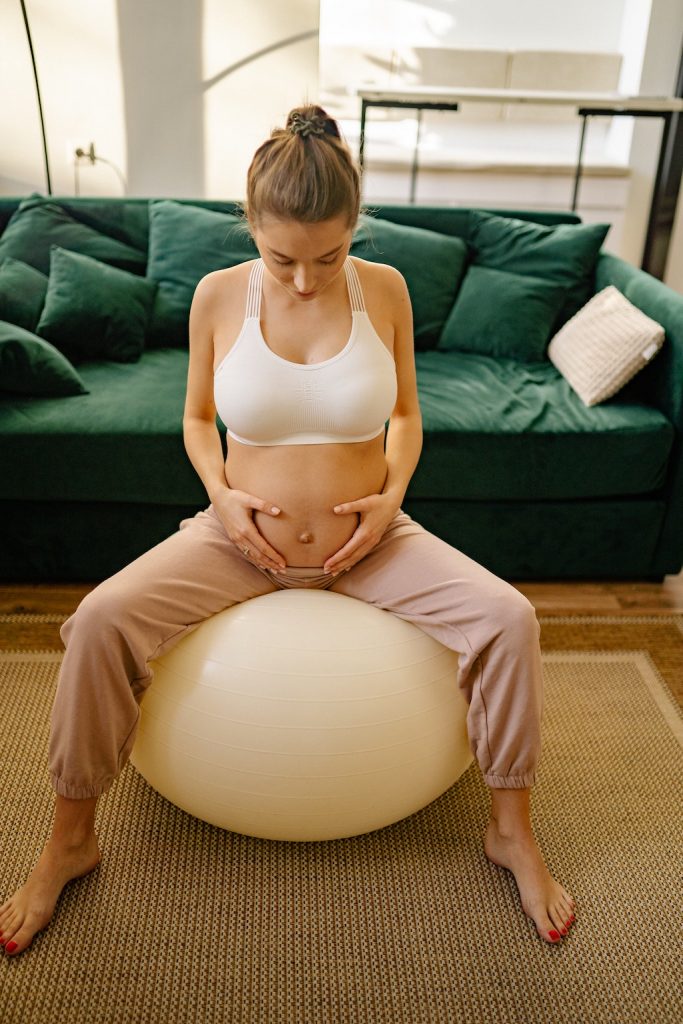Is Sex Painful, especially after giving Birth? You could have PeVD

Sex is bliss, but not when every slip, stroke, and slide brings pain rather than pleasure. And while you can achieve satisfaction by other means, why limit intimacy when you can get to the root of the cause? If you have given birth, and sex is painful – when it’s never been that way before – you could have a condition called PCS (chronic pelvic pain) or Pelvic Venous Disorder (PeVD).
As many as 30 per cent of women report experiencing pelvic pain or dyspareunia (painful intercourse) at some point in their lives. Estimates indicate that up to 10 million women around the world suffer from chronic pelvic pain (source).
While there are no reliable studies on the prevalence of PCS or PeVD in Singapore, Dr Sriram Narayanan, senior endovascular surgeon at The Venus Clinic Singapore, recalls previously seeing only one or two women a month for this condition.
Since it was formally recognised as a Pelvic Venous Disorder (PeVD) in 2021, he now sees three to five (“and rising”) patients every week. “It’s like there is a huge group of young women waiting for a solution to their agony,” he mused. Dr Sriram tells us more about PeVD, and what you can do if you have it.
What is PCS/PeVD?
PCS/PeVD happens because of blood pooling in the veins within the pelvis due to a problem with or incompetence of the valves regulating blood flow of the veins in this area. This poor valve function causes blood to back up and the veins to swell, resulting in what are basically varicose veins deep in the pelvis. These swollen veins cause chronic pelvic pain.
In essence, PCS is pelvic venous hypertension (PVH) or Pelvic Venous Disorder (PeVD) as we now know it.
PeVD is more common in women between the ages of 18 and 50 years who have had two or more children. However it is also seen in some post-menopausal women as well as in those who have gone through multiple cycles of IVF (in-vitro fertilisation).

Image: MAX LIBERTINE on Unsplash
What does PCS/PeVD feel like?
The pain can either be a dull, aching pain or a sharp, burning, or deep pain. The pain can also include feelings of muscle spasms, pelvic cramping, or muscle tightness. Often, the pain worsens just before menstruation, or with prolonged standing or sitting, or with sexual intercourse. But the characteristic symptom is post-coital pain – pain immediately after intercourse that can persist for hours or even a day afterwards.
What are other symptoms of PCS/PeVD?
You can broadly divide symptoms of PCS/PeVD into physical and psychological symptoms.
The physical symptoms of the condition may include:
- A gnawing ache in the pelvis that is consistent and lasts throughout the cycle with flare-ups in between especially pre-menses (can be a dull ache or a sharp, throbbing pain)
- Painful and heavy menstruation, with periods that may sometimes last for two weeks or more
- A feeling of fatigue, sometimes dizziness from the heavy blood loss, persistent pain, and pain medication side effects
- Swollen legs as one’s period approaches, especially if they have existing varicose veins
- Pain that worsens after prolonged sitting or standing
- Increased pain during and after intercourse
- Irritable bowels and the urge to urinate frequently
Meanwhile, the psychological symptoms can include:
- Overuse of painkillers to manage the pain and drug dependence
- Anxiety or stress from repeated misdiagnoses or testing, as well as a severe anxiety as the period approaches.
- Strained personal relationships
- Guilt from time taken from work and family due to debilitating pain and discomfort
- Depression from the pain, the social impact, and symptoms dismissed by friends, family and sometimes even doctors
When should you seek medical help?
While you can usually ignore pain during the first time you have sexual intercourse or on a one-off occasion, a persistent and prolonged pain indicates a more serious underlying condition.

Image: Charles Deluvio on Unsplash
If you are experiencing dyspareunia (painful intercourse) along with some of the other symptoms mentioned above, you could do this online self-assessment.
If the score is:
- low (2 or less): Schedule a visit to your gynaecologist first to rule out any gynaecological causes.
- 3-7: See either a gynaecologist or a vascular surgeon experienced in treating PCS.
- More than 7: You very likely have PeVD, and must see a vascular specialist as soon as possible.
Is PCS/PeVD more common after pregnancy and giving birth?
PCS is caused by enlarged veins in the pelvis. During pregnancy, blood flow to the uterus and pelvis increases, and the veins get enlarged. They almost never return to the normal size. With each subsequent pregnancy, they get bigger.
Most women with children will already have some enlarged veins in the pelvis. If they then also have high pressure and abnormal flow in the veins, they develop PeVD.
After childbirth, especially vaginal delivery, there is some damage to the pelvic floor making it weaker, and allowing this vein blood to leak from the pelvis towards the legs. That can make the symptoms of dyspareunia appear, or make them worse.
What can women do during pregnancy to prevent it?
It is important to maintain an exercise routine as considered safe by your obstetrician throughout the pregnancy. This is particularly true of any exercises that develop core strength. There are specialist yoga and Pilates routines that women can follow during pregnancy.
After childbirth though, it is important to undertake an exercise routine to return strength to the pelvic floor. This will significantly reduce the risk of severe PCS symptoms afterwards. It will also bring down the risk of urinary incontinence and help you return to a more satisfying and pain-free sex life.
(See also: Best 30 Minute Workouts for Busy Mums)

Image: Yan Krukov from Pexels
Why is PCS/PeVD so often underdiagnosed?
It shares many symptoms such as painful periods, heavy and or prolonged periods, and painful intercourse with other common gynaecological causes of chronic pelvic pain like fibroids, ovarian cysts and endometriosis. However, pelvic varicose veins causing PCS are not a gynaecological but a vascular condition.
Most women who present with chronic pelvic pain usually see gynaecologists, who look for gynaecological causes. But standard gynaecological tests, scans and laparoscopies do not detect PCS. Instead, PCS/PeVD detection requires a dynamic (real-time) assessment of blood flow in the veins of the pelvis.
Fortunately, gynaecologists are now becoming more aware of PCS/PeVD and are starting to refer women with otherwise unexplained chronic pelvic pain to vascular specialists.
What are the treatment options for PCS/PeVD?
Each patient receives customised treatment depending on her index symptoms. These are the ones with greatest effect on their quality of life, be it pain, bleeding, or pain during intercourse.
Most women are first managed with a no-intervention trial. Instead they are given targeted pelvic floor physiotherapy, simple medication to improve vein wall tone and reduce vein inflammation, and some lifestyle changes.
If these don’t improve symptoms sufficiently, or if symptoms are severe from the beginning, we may consider minimally invasive catheter-based therapies. The most common is a coil embolisation of the ovarian vein. This seals off or plugs up the incompetent and dilated varicose veins so that they can no longer become engorged with blood and cause pain and heavy periods.
It is usually done with targeted sclerotherapy, where a drug is injected through the catheter into the diseased veins to cause them to shrink by scarring.

Image: Priscilla Du Preez on Unsplash
The PCS/PeVD pain does not disappear completely overnight; it may take one or two menstrual cycles for the procedure to be fully effective. After that most patients are pain-free.
Regardless of which treatment is prescribed, it is important to understand that we must treat PCS/PeVD holistically.
What happens if the condition is not treated?
The physical pain, and other symptoms like heavy periods, can have a serious negative impact on a woman’s quality of life and her ability to function normally. Many lose time at work and forgo social events due to the condition.
There is also the risk of pelvic vein thrombosis (like a deep vein thrombosis but in the pelvic veins), the consequences of prolonged blood loss (chronic anaemia) and progressive var icose veins in the legs.
Apart from the physical pain, women may also suffer from psychological issues such as anxiety, stress, and even depression. This is one of the reasons why we recommend a holistic approach in treating the condition, not just addressing the physical illness but also the psychological issues involved.

Dr Ram (Sriram Narayanan) is a Senior Vascular and Endovascular surgeon at The Venus Clinic. Having qualified in India, he was trained in gastro-intestinal, liver and thoracic surgery, transplantation and vascular surgery in the UK. Dr Ram moved to Singapore in 2011 and served as the Chief of Vascular and Endovascular Surgery at the Tan Tock Seng Hospital. He is also a Director and the Senior Consultant Vascular and Endovascular Surgeon at the Harley Street Heart and Vascular Centre. The Venus Clinic brings together his two decades of experience to create a unique ecosystem providing comprehensive care for women suffering from PCS or Pelvic Venous Disorders.
Featured image: Andrea Piacquadio from Pexels
This article is reproduced with thanks from singaporemotherhood.com.
